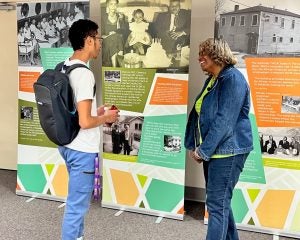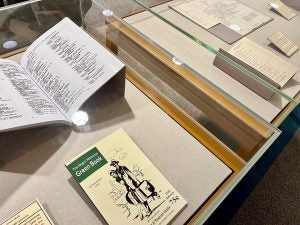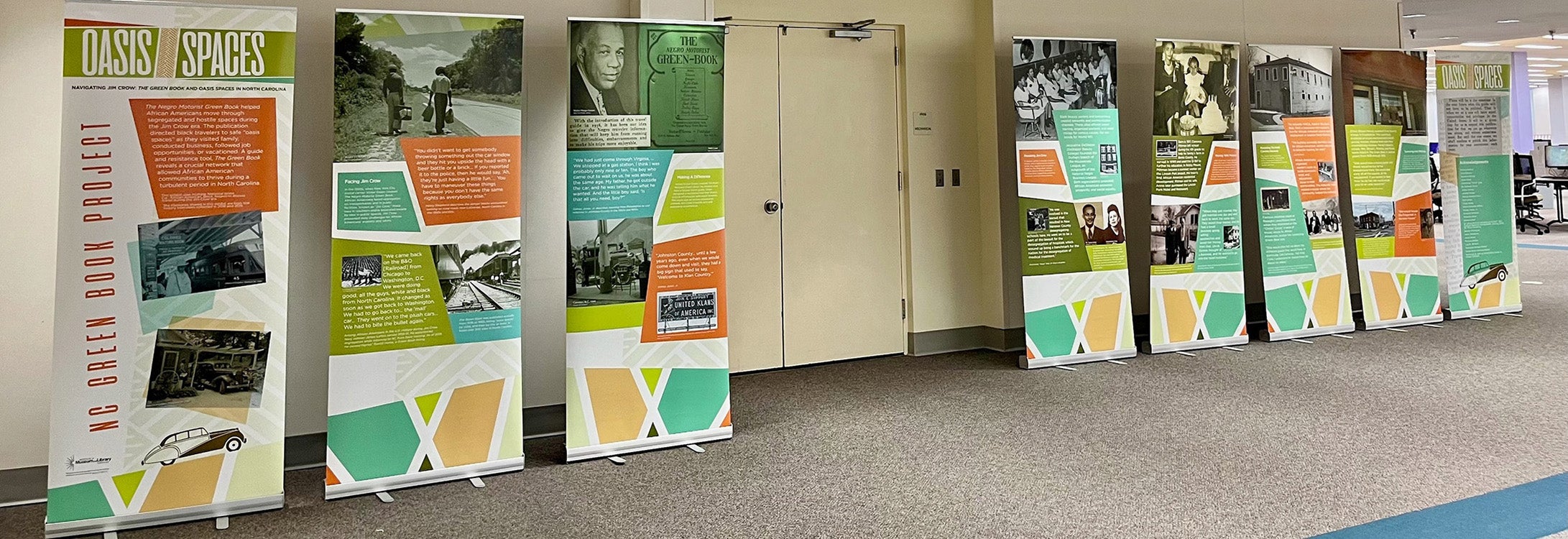‘The Green Book was needed’
East Carolina University’s main campus library is honored to host the traveling exhibition, “Navigating Jim Crow: The Green Book and Oasis Spaces in North Carolina” during Black History Month and through March 27.
Exhibit programming already has included a guest lecture on Feb. 16 by Leesa Jones, director of the Underground Railroad Museum in Washington, N.C. ECU students, staff and faculty and other guests gathered at the seven exhibit panels, developed by the North Carolina African American Heritage Commission, to hear Jones provide insight and discuss local history on use of a Green Book while traveling during the segregated Jim Crow era.

Leesa Jones, right, talks with an ECU student in the main campus library.
“We had towns where you did not want to get caught when the sun went down, which means that you really needed this book,” Jones said. “This book was a guide and a help. It went straight to the Black community and you found everything that you needed. … We need to learn from our history so that we don’t repeat a whole lot of stuff that does not need to be repeated. So when we learn about exhibits like these, we are learning that some people didn’t always have it easy.”
This exhibit, located on the first floor of the library near Research & Instructional Services, was developed by the North Carolina African American Heritage Commission as part of its Green Book Project and designed by the North Carolina Department of Natural and Cultural Resources. It highlights “The Negro Motorist Green Book” and how it served as a guide to safe businesses in North Carolina for African Americans traveling in the state.
Thanks to Head of North Carolina Collections, Jennifer Daugherty, and her exhibition titled “Finding Safe Spaces During Segregation,” materials from the ECU Special Collections Division serve as a complement and also are displayed on the first floor near the library’s front entrance.
“The Negro Motorist Green Book” was published between 1936 and 1966.
“Segregation made life very difficult for a lot of people,” Jones said. “Jim Crow laws made it very difficult for people to travel and navigate this country. The Jim Crow movement morphed into Jim Crow laws, which prohibited people from doing a lot of things that every American should have the right to do. With that, our country just kind of fell in a dark hole.
“The Green Book was needed. It was needed because of segregation.”
Learn more about Jones and the Underground Railroad Museum.
More on the Green Book Project. 
ECU Special Collections materials encased on the first floor of the library.
